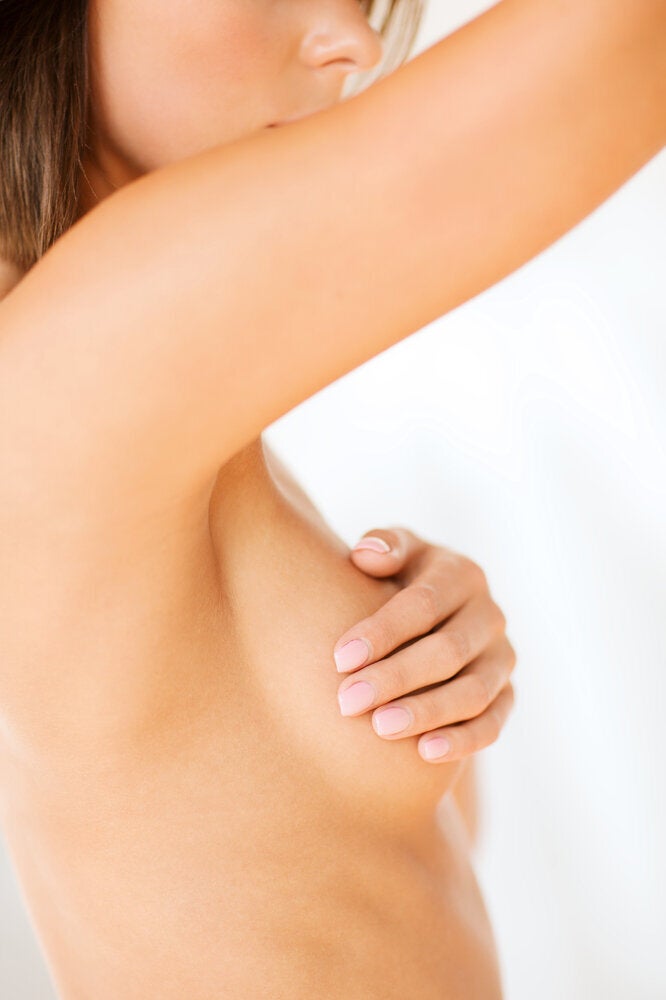Thousands walk for breast cancer. And run, and bowl, and cut their hair. The ways in which we raise money to "fight" breast cancer are endless. But this sea of pink ribbons around me makes me wonder: In decades of research into this potentially fatal disease, what can I tell my daughters to do to prevent it from happening to them?
The answer? Not much. Prevention has been a big hurdle message-wise for breast cancer which has doubled worldwide since 1940. While survival rates are improving in North America, a recent GE Healthcare study entitled Prevention, Early Detection and the Economic Burden of Breast Cancer, says that the developing world, with its limited access to treatment and its various cultural taboos, faces a breast cancer surge that, according to the report's co-author Bengt Jonsson, a professor of health economics at the Stockholm School of Economics, "is a ticking time bomb" in the coming years.
We know that there are some factors that increase the risk of developing breast cancer but that we can't control, including being a woman, early menstruation, later than average menopause, dense breast tissue, being over the age of 50, and a family history of breast cancer or a mutation on the BRCA1 or BRCA2 genes. Check out www.phac-aspc.gc.ca for more on risk.
But since last year's month of pink, what have we learned to aid us in prevention? Sure there have been interesting studies: Coffee may prevent breast cancer from returning, fruit and veggie intake lowers the risk of estrogen-receptive breast cancers, and multivitamins afford some protection for older women with invasive breast cancer. There are dramatic results in animal studies, but women are not mice.
There recently was an interesting revelation that high levels of so-called healthy cholesterol, though good for the heart, raise the risk of breast cancer. Results of another study published in the Journal of the National Cancer Institute challenged the previously held notion that any HRT increases breast cancer risk in all women; in some women, HRT presents little risk. And there's been recent clarification, at least by the U.S. Preventive Services Task Force, on chemoprophylaxis -- so-called preventive drugs such as tamoxifen and raloxifene that really do decrease risk -- being recommended more and more to higher-risk women.
But despite the dollars spent on research and the advocacy of many in the breast cancer community who want their monies directed to prevention, the needle has hardly moved in this area. It's even more discouraging that, while many women believe that the cause of the disease is environmentally based, research to date has not confirmed any significant link.
Perhaps science doesn't yet have all the answers about the impact of environmental chemicals on breast cancer. That's why organizations such as the Canadian Breast Cancer Foundation tell women to use the "precautionary principle" to evaluate risk. They mean that when scientific evidence is inconclusive, "put your health first and err on the side of caution."
But if science is inconclusive, then that's no help when it comes to prevention. So what are we left with?
According to the Centres for Disease Control and Prevention, which works with North American cancer experts, survivors and advocates to control breast cancer, doing the following three things could help reduce the risk of this cancer which now strikes one in nine Canadian women and accounts for approximately 15 per cent of all cancer deaths in Canadian women.
1. Exercise regularly and often. More than 100 studies (several in the last year) show breast cancer risk can be decreased if you are physically active -- but how active? A University of North Carolina study of 3,000 women demonstrated that those who walked, danced or ran 10 to 14 hours per week had a risk 30 per cent lower than inactive women.
Just last week, results of an analysis of over 70,000 post-menopausal women by American Cancer Society researchers (published by www.medicalnewstoday.com) found that walking was linked to lower breast cancer risk regardless of whether the women were overweight, obese or gained weight during the study period.
Ongoing work by the University of Alberta's Dr. Christine Friedenreich has shown that an hour of exercise five times a week reduces breast cancer risk by 25 to 30 per cent. But her current study, the Breast Cancer and Exercise Trial in Alberta, has enrolled 400 post-menopausal women in Calgary and Edmonton to see if less exercise, 30 minutes five days per week, can impact prevention the same as more exercise.
2. Keep a healthy weight. If exercise is most important, keeping a healthy weight has been shown to protect against breast cancer. Compared with people with a body mass index of less than 25, those with a BMI higher than 30 had an overall increased risk of cancer.
According to the Canadian Breast Cancer Foundation, excess weight gained during adulthood increases the risk of breast cancer later in life. The link is believed to be estrogen, which, post-menopause, is produced in fat tissue. Carry more weight and you're exposed more to the hormone, which increases your risk of breast cancer.
3. Drink less alcohol. A pooled analysis of studies conducted in four countries including Canada, in which a total of 322,647 women were evaluated for up to 11 years, showed that alcohol consumption is associated with a linear increase in breast cancer incidence.
Why does as little as three to six glasses of wine a week raise breast cancer risk by 15 per cent? According to Mexican researchers, a protein present in breast cells breaks down alcohol and that process produces free radicals, which damage breast cells causing them to proliferate.
As we put away our pink for another year, prevention remains a mystery still needed to be solved. As for all those thousands of women who have walked and run and danced for breast cancer this month: They've not only raised monies to fund research into prevention, they've also lowered their own risk while being active.
